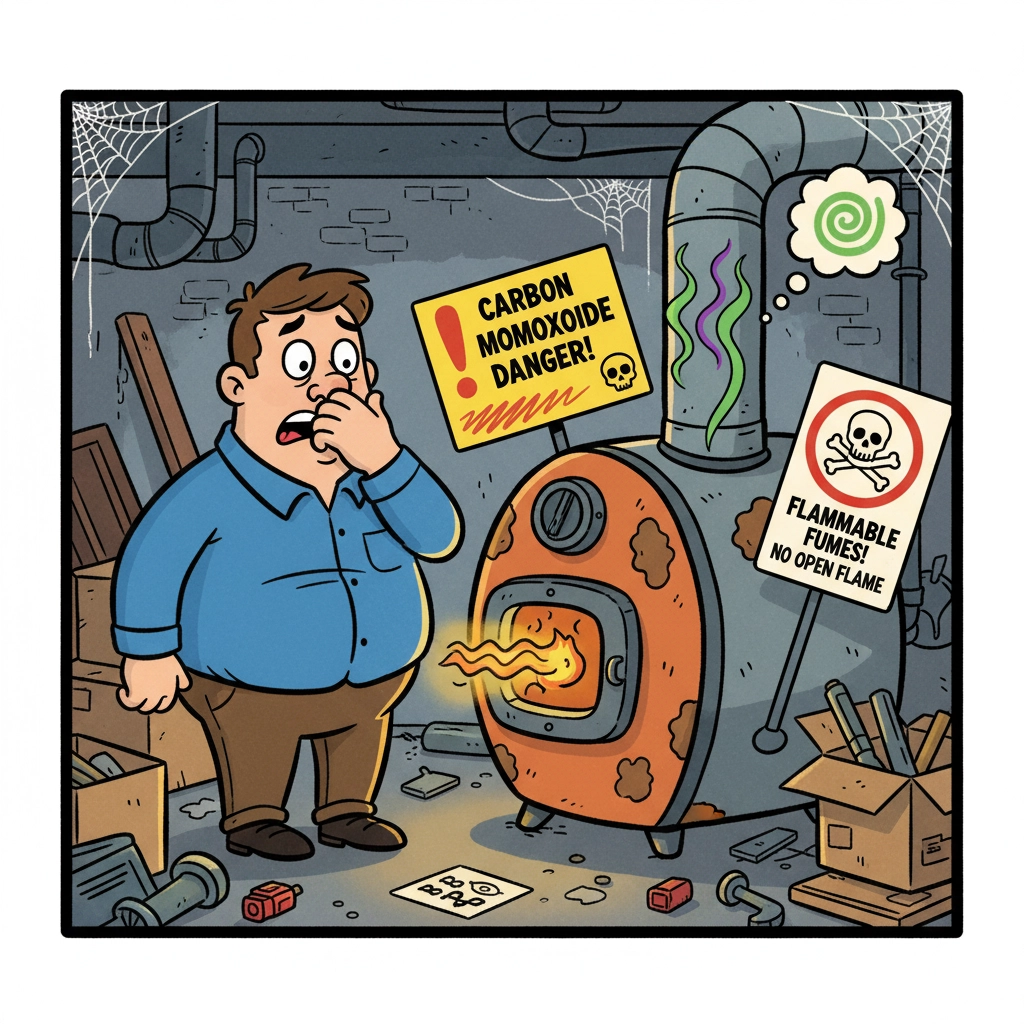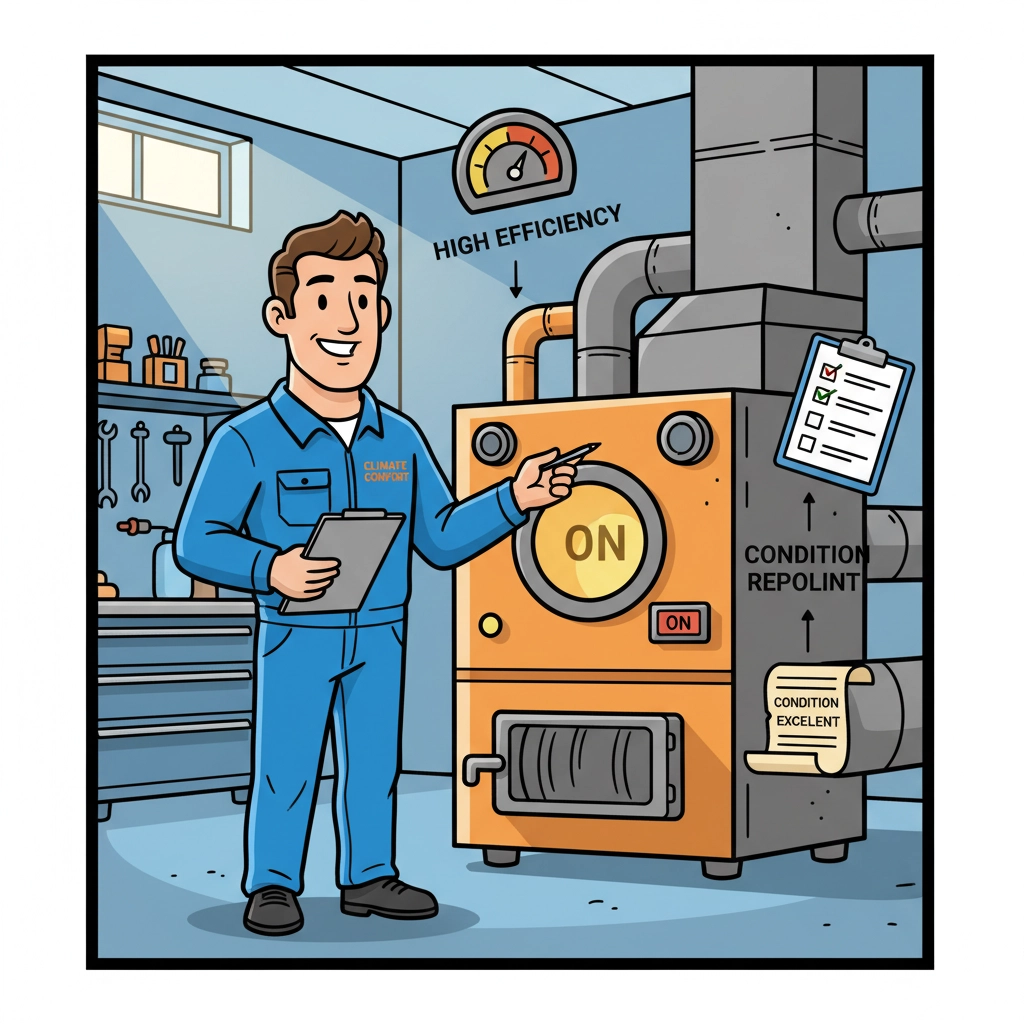Furnace Repair vs. Replacement: 5 Questions Every Greenwood Homeowner Should Ask
- Derek Keister
- Nov 12
- 4 min read
Your furnace starts making strange noises. The heating bills keep climbing. You're calling for repairs more often than you'd like.
Sound familiar? Every Greenwood homeowner faces this decision eventually: repair or replace your furnace. The wrong choice costs you money, comfort, and peace of mind.
Here are five critical questions to ask yourself (and your HVAC contractor) before you decide.
Question 1: How Old Is Your Furnace?
Check your furnace's age first. Most furnaces last 10 to 15 years with proper maintenance. If your system is pushing this limit, replacement usually makes more financial sense than continued repairs.
Find the manufacture date on your unit's nameplate. It's typically located on the side or inside the furnace cabinet. If you can't locate it, your HVAC contractor can help identify the age during a service call.

Once your furnace hits the 12-15 year mark, even minor repairs signal bigger problems ahead. Older systems work harder to heat your home, driving up energy costs while reliability drops.
Consider this: a 15-year-old furnace requiring a $600 repair today will likely need another $400-800 repair within the next two years. New systems come with warranties that protect you from these recurring costs.
Question 2: How Often Are You Calling for Repairs?
Track your repair frequency over the past two years. If you're scheduling service calls every season, your furnace is telling you it's time to retire.
Frequent repairs indicate your system can't maintain reliable operation. Components wear out together in older furnaces, creating a domino effect of failures.
Calculate your total repair costs from the last 24 months. Include parts, labor, and emergency service fees. This number helps you understand the true cost of keeping your current system running.
Most homeowners don't realize they've spent over $1,200 in repairs until they add up the invoices. That's often enough for a substantial down payment on a new, efficient system.
Question 3: Does This Repair Cost More Than 50% of a New Furnace?
Use the 50% rule as your decision benchmark. If a single repair costs more than half the price of a replacement furnace, choose replacement.
Gas furnace installations in Greenwood typically range from $4,000 to $9,500, depending on size and efficiency rating. A major repair costing $2,500 or more signals replacement time.

Common expensive repairs include heat exchanger replacement ($1,500-$3,500), blower motor replacement ($800-$1,200), and control board failures ($600-$1,000). When these pile up, replacement becomes the smarter investment.
Ask your contractor for both repair and replacement quotes. Compare the numbers side-by-side, factoring in warranties and energy savings from a new system.
Question 4: What Are Your Long-Term Costs?
Look beyond today's repair bill. Calculate the total cost of ownership over the next five years.
Older furnaces cost more to operate monthly. They run longer cycles, use more energy, and require frequent maintenance. A 20-year-old furnace might cost you $200-400 more per year in energy bills compared to a new high-efficiency model.
Add projected repair costs to your energy expense estimates. Aging systems typically need 1-2 repairs annually, averaging $350-900 per service call.
New furnaces offer predictable costs: monthly energy savings, minimal repairs during warranty periods, and improved home comfort. Many Greenwood homeowners save $50-80 monthly on heating bills after upgrading to a high-efficiency system.
Question 5: Are There Safety Concerns?
Never ignore safety issues with heating systems. Some problems make immediate replacement necessary, regardless of cost considerations.
A cracked heat exchanger poses serious carbon monoxide risks. This toxic gas can cause illness or death in severe cases. Heat exchanger replacement often costs more than a new furnace while providing no efficiency improvements.

Watch for these safety warning signs:
Yellow or flickering pilot light flames (should burn blue)
Rust or corrosion around the furnace cabinet
Strange smells during operation
Frequent headaches or flu-like symptoms when the furnace runs
Older furnaces (15+ years) have higher safety failure rates. Outdated wiring, worn gas connections, and degraded components increase breakdown risks during cold weather when you need heat most.
If your HVAC contractor identifies safety concerns, replacement protects your family and property. Don't gamble with heating system safety issues.
Make the Right Decision for Your Home
Consider all five questions together rather than focusing on just one factor. A 12-year-old furnace needing its third repair this year probably needs replacement, even if the current repair seems affordable.
Age, repair frequency, cost comparisons, long-term expenses, and safety concerns work together to guide your decision. When multiple factors point toward replacement, trust the data.
For newer furnaces with isolated, minor problems, repair remains the cost-effective choice. But don't throw good money after bad on aging systems that will need replacement soon anyway.
Professional Assessment Matters
Get a thorough evaluation from a qualified HVAC contractor before making your final decision. They can assess your furnace's actual condition, not just the immediate problem.
A professional inspection reveals hidden issues that affect your repair-or-replace calculation. Cracked heat exchangers, worn blower components, and failing controls might not show obvious symptoms until they create expensive emergencies.

Ask for a detailed report including:
Overall system condition assessment
Estimated remaining lifespan
Energy efficiency measurements
Safety inspection results
Cost comparison for repair vs. replacement options
This information helps you make an informed decision based on facts, not just estimates or sales pressure.
Take Action Before Emergency Strikes
Don't wait for a complete system failure to make your decision. Emergency replacements cost more and limit your equipment options.
Plan your furnace replacement during mild weather when contractors have more availability and better pricing. Spring and fall typically offer the best deals on new systems and installation services.
If your furnace shows multiple warning signs from our five-question checklist, start researching replacement options now. Get quotes, compare efficiency ratings, and understand your financing options before you need emergency service.
Ready to evaluate your furnace situation? Contact Speedy Heating and Air for a comprehensive assessment of your heating system. Our Greenwood area experts will walk through these five critical questions with you and provide honest recommendations based on your specific situation.
Don't let an aging furnace cost you comfort, safety, or money this winter. Make the smart choice for your home and family.


Comments